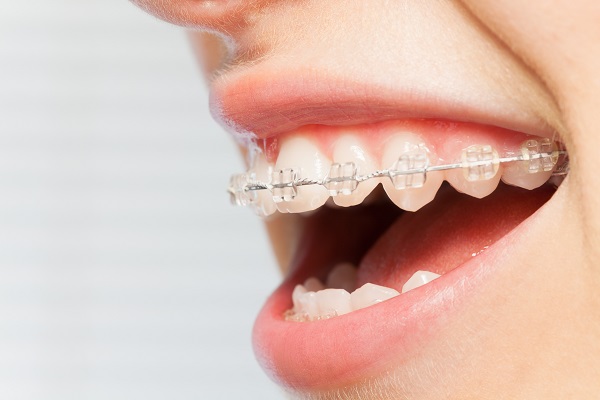Why Clear Braces for Teens Are Recommended

Clear braces for teens are recommended when a dentist notices that your child is developing teeth or jaw alignment issues. The American Association of Orthodontists advises taking your child for orthodontic assessment once they reach the age of 7.
At this point, their smile should be fully developed and developing issues can be detected. Appliances like clear braces can be used to straighten a child’s teeth once their 12-year-old molars have erupted. At this stage, the child’s jaw and facial structures are still developing, making it easier to push their teeth in the right direction.
Why a dentist might recommend clear braces for teens
Metal braces have been the standard for teeth-straightening treatments, and they have been used for centuries. They are durable appliances that improve teeth alignment by pushing the wearer’s teeth into a better position.
Traditional metal braces are made up of metal brackets that are cemented to the patient’s teeth and metal wires that connect these brackets. Tightening the wires increases the force applied to the wearer’s teeth.
Metal braces remain the most effective way to straighten teeth, but they have poor aesthetics. Given how self-conscious teenagers can be, dentists often recommend subtler teeth-straightening treatments.
Clear braces for teeth are just like metal braces, with two main exceptions. The metal brackets are exchanged for clear or tooth-colored ones, and the metal wires are replaced with transparent ones. This gives the patient an oral appliance that can barely be noticed when they smile.
Aligner trays are another discreet way that a teenager can straighten their teeth, but these are removable devices that need to be worn for at least 20 hours a day. Keeping up with them over the course of treatment, which can be as long as two years, is a tall order for anyone, especially a teenager with a million things to do. Not wearing aligner trays as recommended diminishes their effectiveness.
Life with clear braces
The brackets used for clear braces are usually made with ceramics, so they are not as durable as the brackets that make up metal braces. They cannot be moved once cemented to the patient’s teeth, and wires connect the brackets on a dental arch to apply force on the patient’s teeth. If the teen has bite issues, rubber bands might be attached to connect brackets so the patient’s bottom teeth and lower jaw are pushed into the proper alignment.
Get your teen the orthodontic treatment that they need
Do you think that your teenager needs teeth-straightening treatments? Call or visit our San Antonio clinic to set up an appointment with our orthodontist.
Request an appointment here: https://www.ucsmilesortho.com or call UC Smiles Orthodontics at (210) 672-1054 for an appointment in our San Antonio office.
Check out what others are saying about our dental services on Yelp: Clear Braces in San Antonio, TX.
Related Posts
Invisalign® for teens has been a popular choice for patients in this age group. It is not difficult to see why. There are many benefits that these clear aligners provide that other treatments cannot. Still, you should not take the choice between these and traditional braces lightly. It is important to give your teen the…
Phase Two orthodontics is the second stage in comprehensive orthodontic treatment, typically following an initial intervention known as Phase One. The primary objective of Phase Two orthodontics involves perfecting alignment, correcting bite issues, and achieving optimal aesthetics and function. Patients often undergo Phase Two orthodontics during adolescence, once most permanent teeth have emerged, allowing for…
Early orthodontic treatment — or Phase One orthodontics — addresses children's dental and jaw development issues before all their permanent teeth emerge. This treatment can prevent severe orthodontic problems and reduce the duration of treatment in the future. Early assessment and intervention can provide long-term benefits, making Phase One orthodontics a proactive solution for your…
An orthodontist strikes a balance between the least intrusive and the most effective treatments. For jaw misalignment, treatment almost always requires a combination of different measures. Here is what you need to know about how an orthodontist corrects this particular orthodontic problem.The nature and severity of orthodontic problems vary from person to person. Some people…
